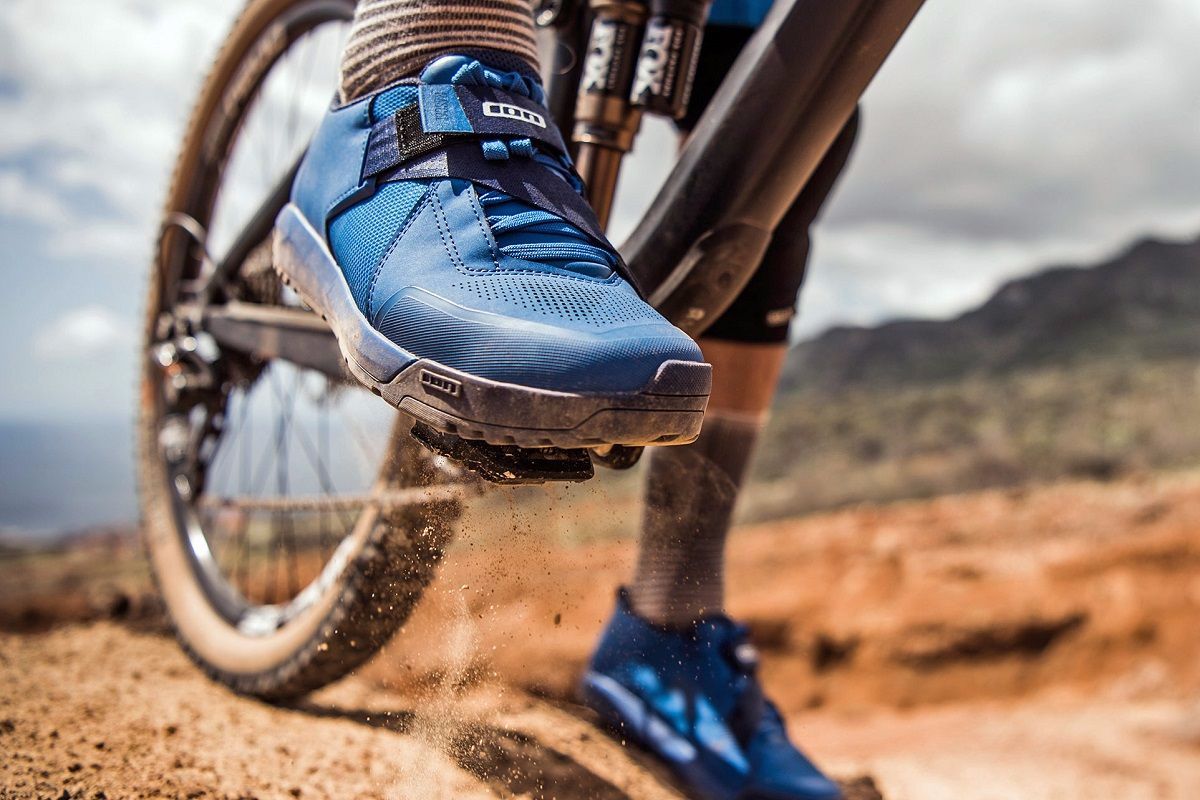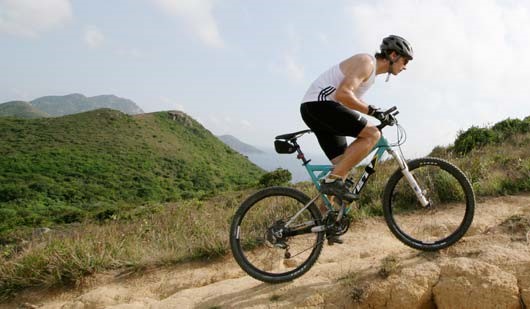Blog
Skills for Mountain Biking – A Guide [5]

Pedaling is not just about pedaling. It involves using force when necessary. It also involves using the right techniques when necessary to overcome obstacles and hilly landscapes.

Gearbox
A bicycle's transmission allows us to use enough power to overcome any steep descent. A typical mountain bike has 3 chainrings and 9 rear gears. Theoretically, we have 28 gears (3X9), although they overlap:
A 30-tooth chainring drives a 15-tooth rear gear (ratio 1:2) and a corresponding 36-tooth chainring (middle chainring) drives a 13-tooth gear. In both cases, a single pedal rotation causes two wheels to rotate.
Maintain correct posture.
For optimum transmission performance, the chain should be aligned as closely as possible to the rear derailleur, which is controlled by the chainring. Chains have limited movement and can wear or break quickly if used incorrectly. The effect of wear is greatly enhanced in rainy and damp conditions.
Golden rule | Rule of thumb:
The large chainring drives the 4 small gears. The middle chainring drives all gears except the smallest and largest. The small chainring drives the 4 largest gears.
Always rotate your legs.
It is correct to use the same amount of pedaling force when shifting gears, regardless of the incline you are climbing. The pedals do not change the amount of effort you need to overcome (although very steep slopes can!). This means that when changing gears, you should try to keep your effort constant. This will make it easier to pedal on steep inclines, but harder on flat surfaces or inclines until you reach your effort zone. You should always feel resistance under your feet. If this is too difficult for you, it means that you are spending more energy pedaling than pedaling.
Get up from the chair for extra strength.
Standing gives you extra strength because you use your entire body weight to push down on the pedals. Because when you stand, you use your upper body more, and this dramatically increases your effort and exertion. It is difficult to maintain a standing position for long. You can even sit on a chair on a very steep slope. However, it is good if you occasionally get up from the chair for a few seconds and slowly press the pedals with your entire weight in a heavy gear - this will help to relieve the load on your legs.
Use of additional force
There are many situations that require extra power reserves. In such cases, you may need to pedal with extra force for a few seconds to overcome an unexpected obstacle. If you are already pedaling to climb a steep hill, you will not have enough energy to overcome the difficulty. This may be enough to take one or two steps, or just to overcome a difficult section. For example: a typical mistake is when you go downhill in maximum gear towards the upcoming hill and end up crashing into the hill because the gear was too high.
Constantly change gear.
You should always try to find a gear that allows you to pedal at the same intensity. During technical riding, you may need to change gears every 10 seconds. You should be able to shift to a lighter gear at any time when you notice an obstacle or surface that slows you down. This could be a sudden climb, a few rocks, or a sharp bend; all of these will slow you down to the point where you need to be in a lower gear to pedal easily.
Recommendation:
The number of gears is always given in increasing numbers from right to left. In gears, 1 is the largest cog (far right) – 3 is the smallest cog (far left). For a cassette, 1 is the smallest cog (far right) – 9 is the largest (far left). You must always pedal to change gears.
On the picture: Transmission sequence

Exercise 1: Correct chain position
Find a level area, free of major obstacles, where people are not moving around, as you may need to watch the chain as you walk.
- Start with a low gear (3X9).
Start riding your bike and gradually change gears with the rear derailleur (9 > 8 > 7 > 6). - Now change the chain link 3 > 2
- The pedal is already getting difficult to use. So ease up from the rear 2nd gear and change gears 6 < 7 < 8
- Now that you're back in low gear, you can increase your speed again. With the rear wheel, go: 8 > 7 > 6 > 5 > 4 > 3 > 2.
- Now move to the big chain link 2 > 1
- Change 2 gears again 2 > 3 > 4
Now you can complete the sequence 4 > 3 > 2 > 1. - Start slowing down and follow the inverted sequence: forward from 1 to 3 and backward from 1 to 9.
You should be able to walk 200 meters in all of these sequences.
Exercise 2: Preliminary calculation
Choose a road where you can pick up speed and at the end of which there is a steep descent. Accelerate in such a way that you develop a low speed - a large chainring and a low gear (1X3). As soon as you hit a slope, start changing gears to maintain the same power, because you have to continue uphill. This exercise will force you to use an adequate speed quickly. Stop changing gears as soon as you feel comfortable with the amount of power you are expending. If you cannot find a slope, then choose a place where you will stop. Pick up maximum speed until you get close to the maximum gear (1X1/2/3). Start slowing down and alternately changing gears and braking. Your goal is to reach the point of stopping motion that you can do in the lowest gear (3X6/7/8).

